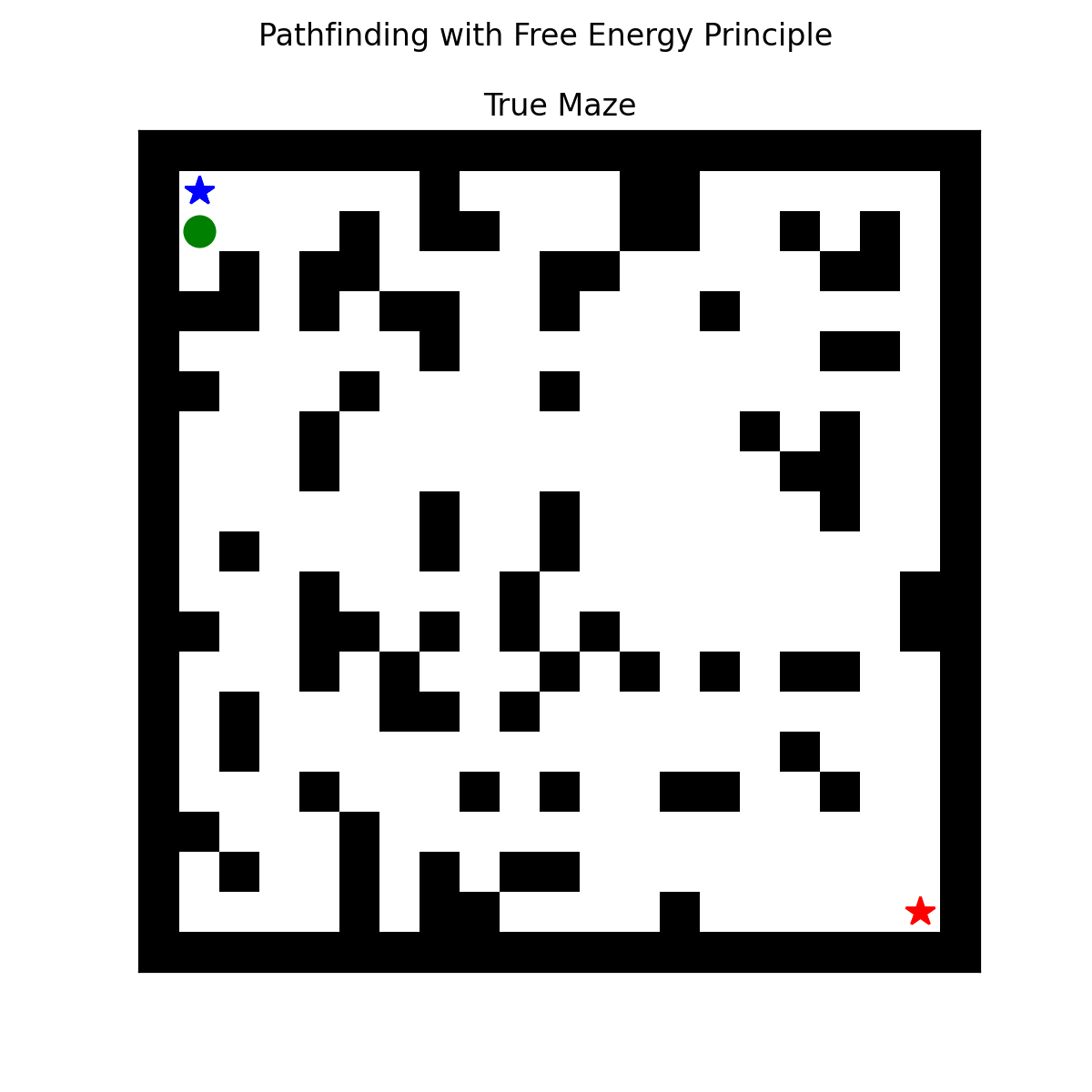Pathfinding with the Free Energy Principle
The Free Energy Principle, widely used in neuroscience and machine learning, provides a framework for decision-making under uncertainty. This simulation demonstrates how an agent can navigate a randomly generated maze using this principle. The agent forms beliefs about its environment, updates them based on observations, and selects actions that minimize expected free energy.
Maze and Terrain Generation
We use Prim's algorithm to generate a random maze. The maze is represented as a 2D grid where 1 denotes walls and 0 represents free paths.
The agent starts at
For terrain we represent the cells the same way, but just fill random cells on a grid.
Prior Preferences
The agent assigns a preference value to each position in the grid, decreasing with distance from the goal:
where
Indeed we are encoding directions here for the agent to find the goal, but its the pathfinding using the FEP we are interested in.
Belief Representation
The agent maintains a belief matrix
Observations update beliefs in a local neighborhood around the agent’s current position.
Expected Free Energy (EFE)
At each step, the agent calculates the expected free energy (EFE) for each possible move:
where:
is the prior preference value, is the visit penalty (increased for frequently visited positions), and is a scaling factor.
Action Selection via Softmax
The agent selects its next action based on a softmax function over the negative EFE values:
where
Simulation and Visualization
The agent explores the maze, updating its beliefs and path history. The animation below illustrates the agent's movement towards the goal.


Conclusion
This simulation demonstrates how an agent can navigate an unknown environment by minimizing free energy. The method blends exploration and exploitation, making it a robust approach for pathfinding under uncertainty. Future extensions could include dynamic obstacles and multi-agent scenarios.